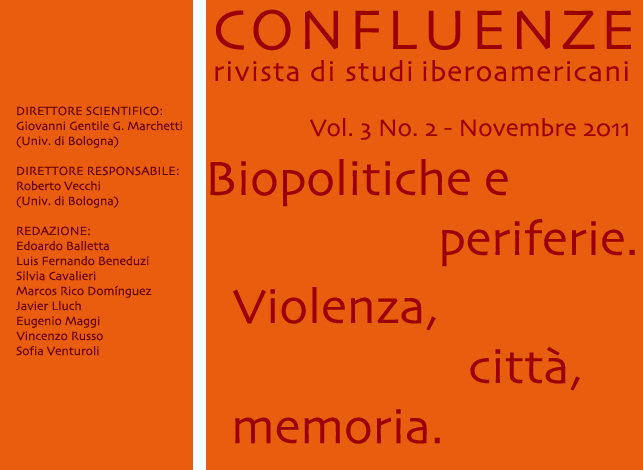Come funziona una città duale: i discorsi sulla povertà e l’invisibilizzazione della baraccopoli in La Villa di César Aira
DOI:
https://doi.org/10.6092/issn.2036-0967/2388Keywords:
César Aira, villa miseria, shanty towns, Buenos Aires, anti-representative fictionAbstract
César Aira’s novel La Villa is not about the life in the shanty town: it tells the way shanty towns are perceived by the other city dwellers. Instead of focusing on the villa miseria, it focuses on the role it plays in the city’s self-representation. The social stereotypes that are commonly associated to the shanty town are ironically assimilated into the narrative perspective, allowing the text to enquire obliquely the social discourses that nourish and support its construction as a foreign body inside the city.
Downloads
Published
How to Cite
Issue
Section
License
Copyright (c) 2011 Lucrecia Velasco Esquivel
The copyrights and publishing rights of all the texts on this journal belong to the respective authors without restrictions.
This journal is licensed under a Creative Commons Attribution 4.0 International License (full legal code).
See also our Open Access Policy.
Metadata
All the metadata of the published material is released in the public domain and may be used by anyone free of charge. This includes references.
Metadata — including references — may be re-used in any medium without prior permission for both not-for-profit and for-profit purposes. We kindly ask users to provide a link to the original metadata record.






